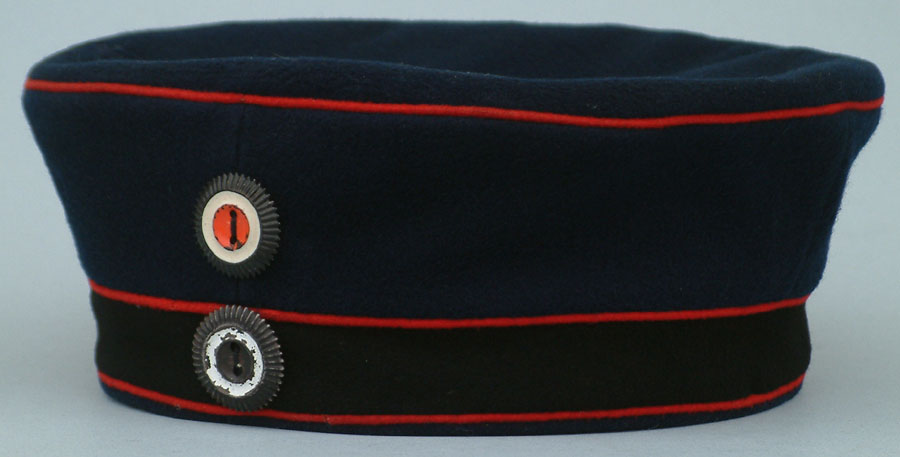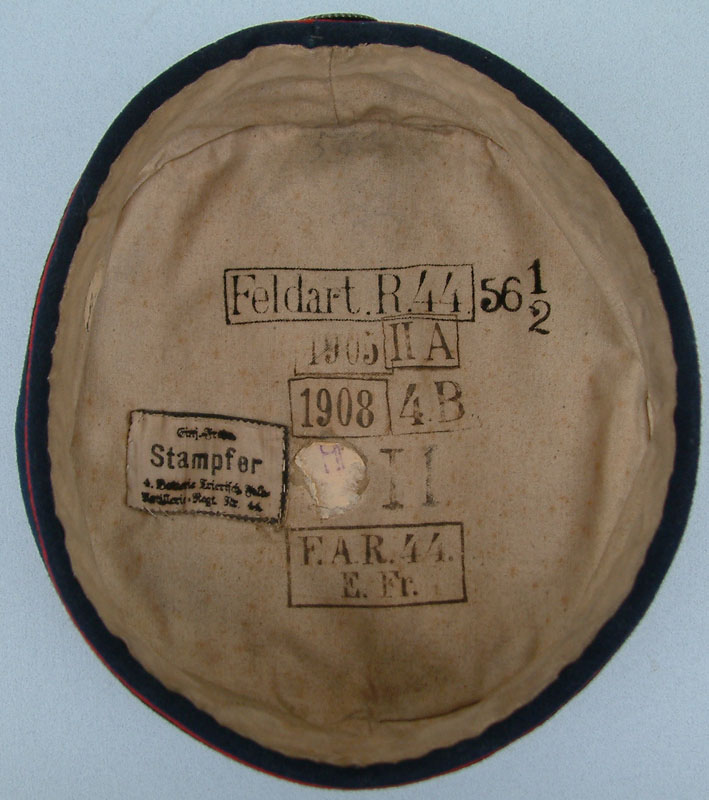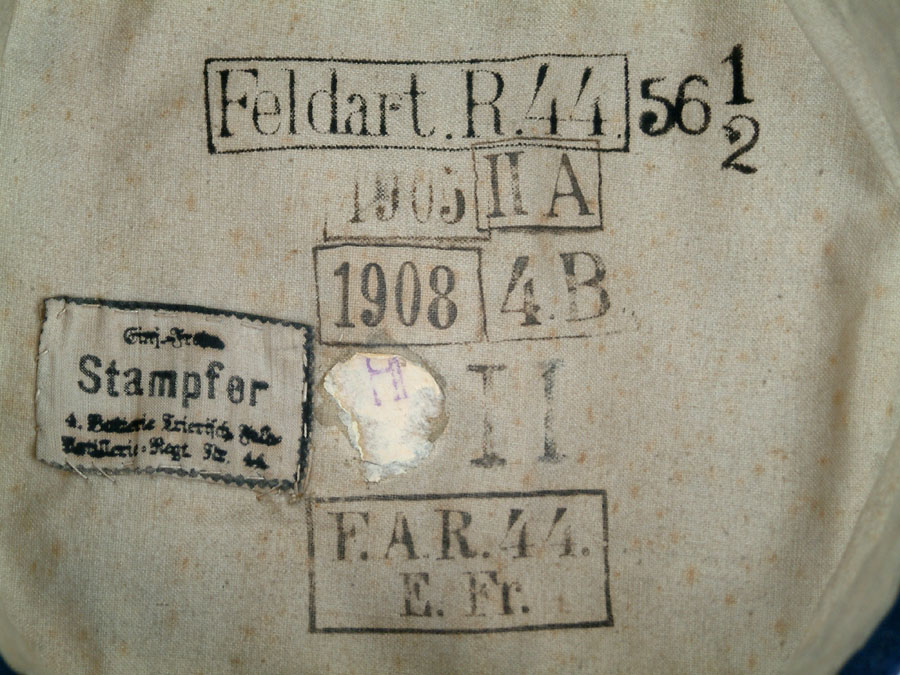The uniform equipment of the one-year volunteer required everything to be purchased privately wrong wrong wrong.
All of the four armies of Imperial Germany followed this basic method. one-year volunteers had to pay the unit for their service. Additional equipment and uniforms could be taken at their own expense and risk. You need to read in detail first this section of the army order. Then read the further clarification in one of the one-year volunteer manuals. This one is particularly clear even though it is specific to the field artillery.
Attachment 2 to § 19 of „Heerordnung“
Uniform, food and equipment of one-year volunteers
1. Any OYV has to buy the required pieces of equipment and uniform out of his own money. During their one year of service they have to care about food and accommodation by themselves during peace-times.
Pieces of equipment including horse-riding equipment are supplied by the respective military unit against payment of an annual compensation for use, wear and tear of such equipment. Weapons shall be supplied under the condition of due care by the OYV who has to keep them in proper and serviceable condition and who has to hand them back after leaving active military service.
2. If a OYV is using his privately purchased uniform he is doing so under the risk that his unit may refuse this uniform in case it is not properly manufactured according to military specifications.
Any OYV therefore may be interested in purchasing his uniform and equipment through the Garment Committee (Bekleidungskommission) of his unit against paying the officially budgeted prices (Etatspreise).
3. If a OYV may find himself in the difficult position to officially declare that he won’t be able to further financially support himself during his remaining period of service and if it doesn’t seem to be justified to support him granting free access to free meals and accommodation through his unit according to § 94,12 of the “Wehrordnung”, he may lose his status of being a OYV and therefore will not be transferred to reserve status after one year of service. Costs incurred by purchasing uniforms and equipment will not be redeemed in such case.
4. Any pieces of uniform remain being property of the OYV after regular discharge (after regularly being transferred to reserve status). Pieces of equipment have to be handed back to the military unit.
5. In case of mobilization a OYV will be fed and equipped on expenses of the army like regularly enlisted men. Field serviceable pieces of uniform in the property of the OYV can be kept and used; garrison serviceable pieces may be transferred to the respective “Ersatz” unit; in both cases the estimated value has to be paid to the OYV by his unit. Any compensation paid by the OYV to use official pieces of uniform and equipment shall be redeemed by his unit of the first day of the month in which mobilization was ordered.
6. Upon demobilization the OYV shall hand back all pieces of uniforms and equipment he has received from his unit. If they are not transferred to reserve status upon demobilization the OYV again has to care for uniform and equipment by himself. If he would like to keep pieces of uniform and equipment after demobilization he has to refund the respective estimated value to his unit.
Wernigk, Major and battalion commander in FAR 57
Handbook for OYV of the field artillery
11th edition, E S Mittler & Sohn, Berlin 1908
I Uniform and equipment, horses, food and accomodation of OYVs
1. OYVs have to purchase and maintain uniforms and equipment on their own expenses.
Pieces used during military service shall be supplied from stocks of the unit against payment of an annual equipment fee. Need of equipment shall be defined by regiment at the beginning of a service year and supplied to the OYV against respective payment.
Prices (Etatspreise) vary between regiments; the following figure shall only be regarded as a general hint:
Feldmütze (Krätzchen, field cap) 1.20 M
Waffenrock (tunic) 18.50 M
Halsbinde (neck binder) 0.40 M
Reithose (riding trousers) 17.75 M
Tuchhose (uniform trousers) 9.10 M
Mantel (coat) 26.60 M
Drillichjacke (white drill tunic) 2.30 M
Drillichhose (white drill trousers) 2.15 M
If it may be assumed that of each piece of uniform, except the coat where just one piece will be sufficient, two pieces will be required, the estimated value of the uniform pieces supplied by the regiment will be 129.40 M = approximately 130 M All pieces of uniform paid that way shall become personal property of the OYV.
OYVs should be interested in purchasing their uniforms through their units because only then the respective pieces will match military requirements and specifications by costing only budget prices.
In case a OYV would like to use his privately purchased uniform he is running the risk that his unit may refuse those pieces because they are not fully meeting military specifications.
The OYV also has to purchase his own boots. He would need to have two pairs of fine riding boots (not made of patent leather, “Lackleder”), one pair of infantry boots and two pairs of jack boots (kind of coach drivers boots) with spurs. Together the boots might cost around 100 Mark.
2. Pieces of equipment such as helmet, saber belt, bandolier etc., and also hand weapons will be supplied by military unit against flat compensation for use. OYV has to keep them proper and field usable on his own expense and he has to pass them back to his unit at the end of his active service year.
Compensation for one year of use will be: 2.15 M
Compensation for use of weapons will be 2.40 M
So called extra pieces (Extra-Sachen) e.g. uniform pieces made of fine and higher quality fabrics shall only be worn by OYV after service hours during private time if color, make and style comply with military specifications. But even those pieces matching military specifications shall only be worn during private time. For service only officially supplied pieces shall be worn.
Use of such extra pieces depends upon financial situation of OYV and upon location of his garrison. We would suggest the following need (which is usually estimated rather a little too high):
Extra pieces
2 caps of 5 M each 10,-- M
2 tunics of 65 M each 130,-- M
3 pairs of uniform trousers of 25 M each 75 ,-- M
3 saber belts of 4.50 M each 13.50 M each
2 saber knots of 2.50 M each 5,-- M
1 helmet including transport box 30,-- M
1 saber 17,50 M
1 coat 80,-- M
Total: 409,-- M
Estimated need of repair
Mending, ironing, cleaning. Fixing, new collars, straps, spurs (also maintenance of official pieces): approximately 86,-- M
Additional costs
When promoted to NCO rank:
1 visor cap (Schirmmütze) 6.50 M
1 saber knot 3.50 M
1 white drill tunic (Drillichjacke) 7.50 M
Fixing rank insignia and new collars 32.50 M
Total: 50,-- M
Total costs of uniform and equipment for a OYV are as follows:
Uniform pieces supplied by unit 130,-- M
Boots 100,-- M
Compensation use of equipment 2.15 M
Compensation use of weapons 2.40 M
Additional costs NCO promotion 50,-- M
Total: 784.55 M
Altogether 784.55 M of costs of uniform and equipment of which 134.55 M had to paid to unit right at the start of the one year service.







